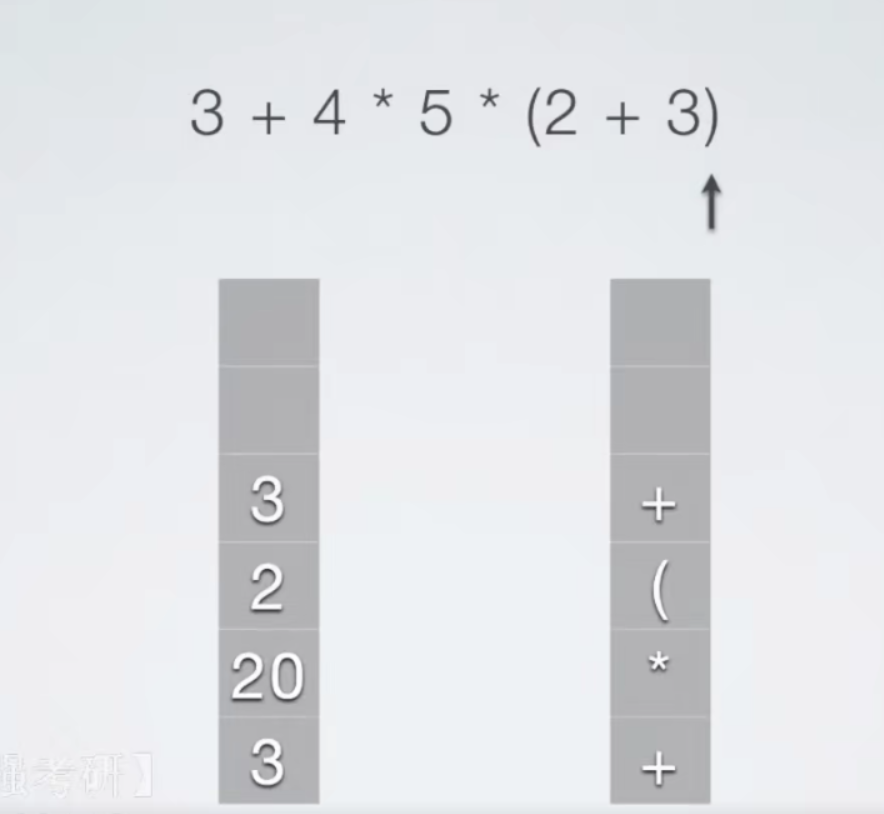
int getPriority(char op) #判断运算符优先级
{
if(op == '+' || op == '-')
return 0;
else
return 1;
}
int calSub(float opand1, char op, float opand2, float &result) #子表达式求值
{
if(op == '+') result = opand1+opand2;
if(op == '-') result = opand1- opand2;
if(op == '*') result = opand1 * opand2;
if(op == '/')
{
if(fabs(opand2) < MIN) #fabs() 求绝对值,MIN几乎为零,对float是否为零的标准写法,不直接判断为零,而是用这种接近的方式
{
return 0;
}
else
{
result = opand1 / opand2;
}
}
return 1;
}
//求解中缀表达式
float calInfix(char exp[ ])
{
//定义两个栈并且初始化
float s1[maxSize]; int top1 = -1; //存操作数
char s2[maxSize]; int top2 = -1; //存运算符
int i = 0;
while(exp[i] != '�') //‘�'为结束符
{
if('0' <= exp[i] && exp[i] <= '9')
{
s1[++top1] = exp[i] - '0'; //将字符型转换为数值型
++i;
}
else if(exp[i] == '(')
{
s2[++top2] = '(';
++i;
}
else if (exp[i] == '+' || exp[i] == '-' ||
exp[i] == '*' ||exp[i] == '/' )
{
if(top2 == -1 || s2[top2] == '(' || getPriority(exp[i]) > getPriority(s2[top2]))//当栈空或为左括号或当前优先级>栈顶优先级时入栈
{
s2[++top2] = exp[i];
++i;
}
else
{
int flag = calStackTopTwo(s1, top1, s2, top2);
if(flag == 0)
return 0;
}
}
else if(exp[i] == ')')
{
while(s2[top2] != '(')
{
int flag = calStackTopTwo(s1, top1, s2, top2);
if(flag == 0)
return 0;
}
--top2;
++i;
}
}
while(top2 != -1)
{
int flag = calStackTopTwo(s1, top1, s2, top2);
if(flag == 0)
return 0;
}
return s1[top1];
}
//将重复的部分写成函数
int calStackTopTwo(float s1[ ], int &top1, char s2[ ], int &top2)
{
float opand1, opand2, result; //opand1, opand2接收出栈操作数,result是运算符结果
char op; //运算符
int flag;
opand2 = s1[top1--];
opand1 = s1[top1--];
op = s2[top2--];
flag = calSub(opand1, op, opand2, result);
if(flag == 0) {
std::count<<"ERROR" << std::end1; //puts("ERROR");
}
s1[++top1] = result;
return flag;
}
//
